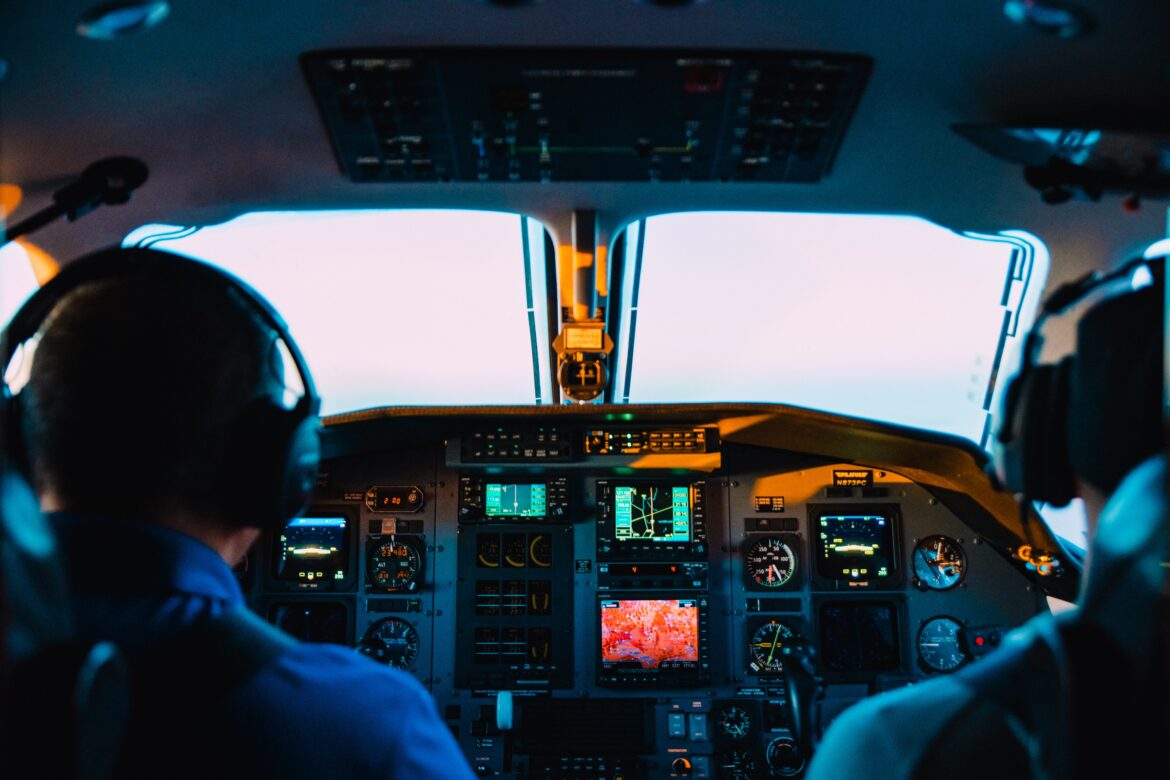Points Miles and Bling (blog) contains referral or affiliate links. The blog receives a small commission at no additional cost to you. Thank you for your continued support. Credit Card issuers are not responsible for maintaining or monitoring the accuracy of information on this website. For full details, current product information, and Terms and Conditions, click the link included.
The idea of pilots sleeping during flights often triggers unease among the public. This apprehension is driven mainly by the assumption that a sleeping pilot equates to an unattended cockpit, conjuring images of a plane flying without active control. A fundamental misunderstanding of in-flight operations and safety protocols amplifies this fear. Add to it the public’s heightened awareness of aviation accidents, and the topic can be anxiety-inducing for some. Another factor could be the societal expectation that professionals must remain constantly alert and focused. Even if perfectly safe and regulated, the idea of a pilot sleeping conflicts with this expectation, evoking discomfort.
Important disclaimer: I am neither a pilot nor an expert in managing pilot fatigue. This post is purely for entertainment, and the information has been gathered from several sources. I have done my best to link and credit all sources in the post.
Are Pilots allowed to sleep during flight?
Pilots can sleep during flight, though this is subject to strict regulations. This practice is more common and necessary during long-haul flights, though it’s also allowed on shorter ones to counteract fatigue. There are two main reasons for allowing pilots to nap. Firstly, controlled rest is intended to boost alertness during high workload periods, such as descent, approach, and landing. This rest resembles a “power nap” and is especially useful in managing fatigue. Secondly, ensuring pilots are well-rested is crucial for flight safety, as fatigue can significantly impair their ability to perform duties effectively, potentially leading to errors and accidents.
Canadian Aviation Regulations define rest facilities for pilots and crew members in three distinct classes;
class 1 rest facility means a bunk or other horizontal surface located in an area that
- (a) is separated from the flight deck and passenger cabin;
- (b) has devices to control the temperature and light; and
- (c) is subject to a minimal level of noise and other disturbances; (poste de repos de classe 1)
class 2 rest facility means a seat that allows for a horizontal sleeping position in an area that
- (a) is separated from passengers by a curtain or other means of separation that reduces light and sound;
- (b) is equipped with portable oxygen equipment; and
- (c) minimizes disturbances by passengers and crew members; (poste de repos de classe 2)
class 3 rest facility means a seat that reclines at least 40° from vertical and that has leg and foot support; (poste de repos de classe 3)
Pilots typically sleep in one of two ways during flight: ‘Controlled Rest’ and ‘Bunk Rest.’ Controlled rest happens in the cockpit, where a pilot can take a short nap in their seat, usually up to 45 minutes, which is reclined away from the controls. This is not an impromptu snooze but a structured rest period to enhance alertness during critical phases of the flight, such as descent and landing.
Bunk rest, on the other hand, is taken in dedicated crew rest areas. These areas are either in the passenger cabin in a reserved seat or in unique ‘bunk’ beds provided on long-haul aircraft. These bunks are often located in the aircraft’s tail, cargo area, or above the passenger cabin, designed to offer a quiet and comfortable sleeping environment. These rest areas are designed to be quiet and comfortable, allowing pilots to rest more, especially on long overnight flights.
Globally, aviation authorities like the International Civil Aviation Organisation (ICAO) and the Federal Aviation Administration (FAA) have set standards for crew rest. These vary by country and airline but are fundamentally aligned in ensuring pilots are sufficiently rested. Regulations typically specify the duration and timing of rest periods, providing at least one pilot is always awake and alert at the controls.
Takeaway
Pilot sleep during flights is a regulated practice vital for maintaining alertness and ensuring air travel safety. Whether through Controlled Rest in the cockpit or Bunk Rest in specialized areas, these rest periods are essential in managing pilot fatigue, especially during the demanding and intensive phases of flight.
How do you feel about pilots napping inflight?
Title Image: by Caleb Woods on Unsplash

5 comments
Rest facilities are for augmented crews. (long journeys which require extra crew and mandatory rest) Controlled rest is done on the flight deck and is a team effort with the flight attendants being aware, Do not confuse the two. Controlled rest should be law in the USA. US pilots fly more red eyes without rest facilities than anywhere else in the world. US pilots also live with circadian swaps. It is not just a red eye but a red eye that operates at the same time you arrived the day before. Try swapping your sleep schedule some time and report back how that goes!e
So class 1 doesn’t require portable oxygen like class 2?
That almost shows that you can’t rest in economy class. It doesn’t even meet class 3
I think thew key here is ‘away from passenger cabin’, which definitely rules our resting in economy cabin. We have seen some pilots use Business/First pods to rest – but that would be airline/country based regulation that allows them to use the space. Not sure what the deal with Class 1 and no portable oxygen is, intriguing!
Controlled rest is not a thing in the USA. That’s a Europe deal
Good clarification – I did read that in one of the other sources. US indeed does not allow rest inside cockpit.